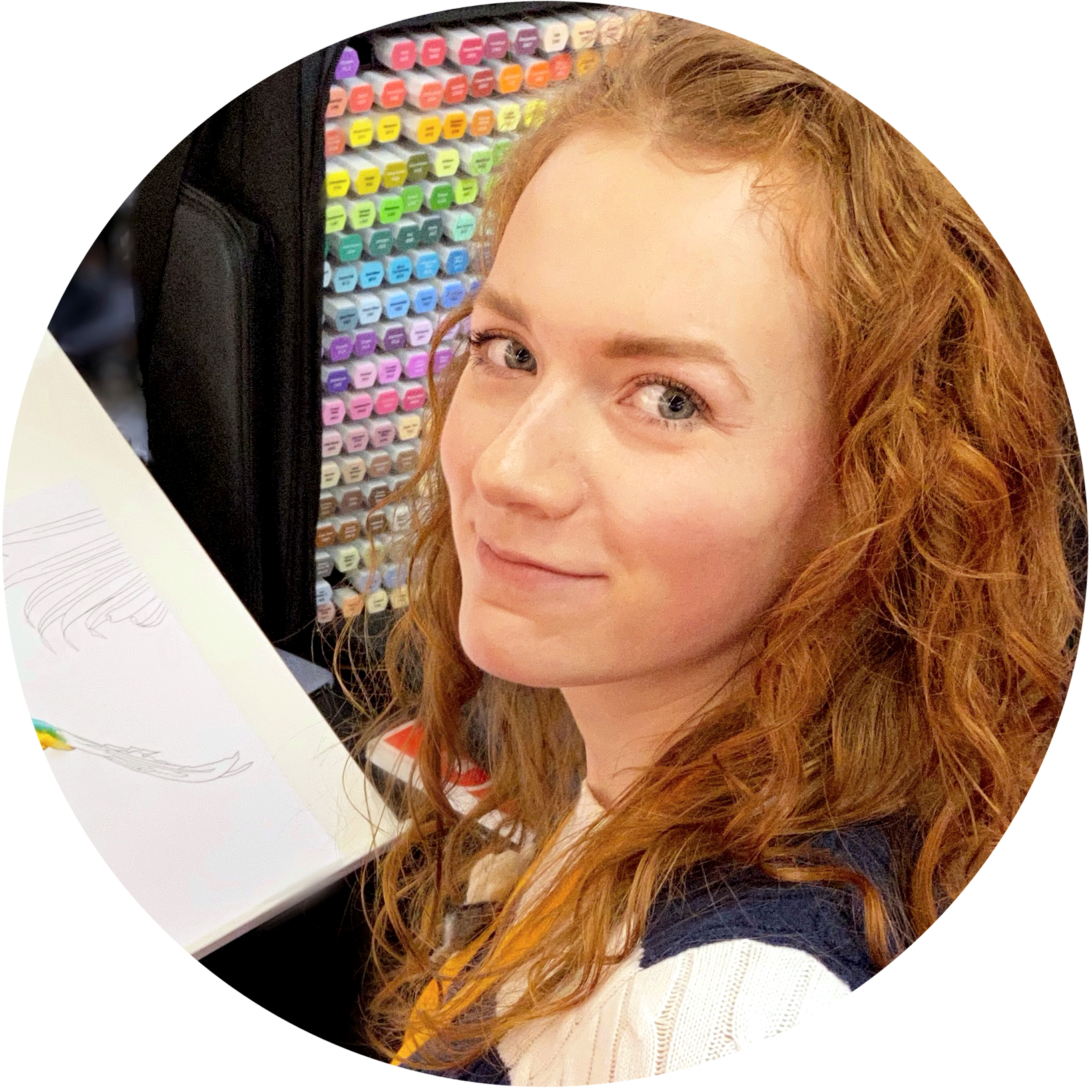5 Ways to Create Emphasis in Your Artwork with Colour
Don’t have time now? Pin for later!
How to make the core element of your artwork to stand out?
You can approach this issue from different angles. One of the powerful tools at your disposal is COLOUR.
By using one or several approaches from this list, you can make a clear emphasis on your artwork.
1. Saturation
Our eyes are attracted to highly saturated colours, whether it’s the reddest apple in the grocery shop or a flower bed covered with sunny daffodils.
The same is true for your artwork.
The core element should be the most saturated one.
It doesn’t have to be bright red or yellow. However, its intensity should be high enough for it to stand out from the rest of your piece.
This principle can be clearly seen in the painting below. Gustav Klimt uses a variety of saturated colours on the woman’s garment to draw our attention to her. Because of that, he can leave skin tones subtle but, still make the whole figure distinct from the background.
2. Colour temperature
A warm object will stand out on the cool background and vice versa.
It happens because warm colours appear to be closer to us, while cold ones retreat to the background. So their juxtaposition creates dimension.
Jean-Honoré Fragonard used this effect masterfully to focus all attention on a warm rosy figure of a lady set against a blue-green background. It seems as if she radiates light.
3. Solitary colour
A unique colour will set your subject apart.
If a hue is present only in one place of an artwork, then our eyes will be instantly attracted to it. Our brain is good at picking up anything unique, like these goldfish painted by Henri Matisse. Their blood orange hue doesn’t appear anywhere else in the painting, which makes them the point of our attention.
4. Complementary colours
They are the opposites that are always attracted to each other like magnets.
Blue and orange, or purple and yellow, or red and green – when they come together, they make an object pop.
Think of a red lady bird on a green background.
In his work, Van Gogh often used complementary colour palettes. Look at his Two Crabs below. This painting is a vivid example of how powerful such colour combinations can be.
5. Tonal contrast
When we think about colours, we focus on their chroma and often forget about the tonal component. Tonal contrast refers to the level of brightness an area has in relation to another. It’s crucial for monochrome art where hue is the same, and only brightness varies. However, you can surely rely on it while working with various colours.
By making the background darker or lighter than the subject, you’ll help it to stand out.
When painting his Wanderer above the Sea of Fog, Caspar David Friedrich chose this principle to create an imposing figure towering above the world. Here the colour gives way to tone. Only if you look very closely can you see that the suit isn’t black but dark green instead. As for the background, it’s nearly transparent.
As you’ve probably noticed from the examples above, artists rarely used only one way to emphasise the subject. For instance, in Two Crabs apart from complementary colours, colour temperature, and solitary colour approaches also contribute to the overall effect.
Now, when you know all the ways to create emphasis in your artwork using colour, you can mix and match them to get the best results.
Look at the physalis artwork below.
It has 4 types of colour contrast:
Saturation
Vivid yellows and oranges are juxtaposed against the muted background.
Solitary colour
Only the physalis is orange.
Colour temperature
The warm sunny physalis is set against the cold background.
Complementary colours
These deeper orange hues are complementary to teal.
Physalis by Tatiana Kuvaldina
P.S. Which of the following 5 ways fits your style more? Let me know in the comments below.
Keep creating!
Yours,
Tatiana
You might also enjoy
Hello!
My name is Tatiana Kuvaldina.
I am a colour expert.
My purpose is to help creatives like you to build their confidence one colour exercise at a time.
Let’s talk more on Instagram
Find me @tkuva_illustrates

















